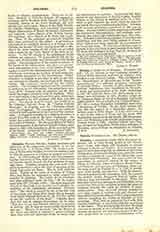

Colonia, a titular see of Armenia. Procopius (De aedif., III, iv) informs us that Justinian restored a fortress which had been captured by Pompey, then fortified it and called it Colonia. This city figures in the “Synecdemus” of Hierocles and in the “Notitiae episcopatuum” as a suffragan of Sebaste, metropolis of Armenia Prima. Lequien (I, 429) mentions five bishops: Euphronius, later transferred to Nicopolis, a friend and correspondent of St. Basil; Eustathius in 458; St. John the Silent, who died a monk at St. Sabas, near Jerusalem, in 557; Proclus, exiled by the Emperor Justin in 518 as a Severian; Callinicus in 680 and 692. Benay published in “Ethos d’Orient” (IV, 93) a curious Byzantine inscription concerning a drungarius of Colonia. In the ninth century the city was the capital of a Byzantine theme. Its modern name is Koilu Hissar; it is the chief town of a caza in the vilayet of Sivas, and has about 1800 inhabitants, among them 600 Greeks, 200 Armenians, and a few Protestant and Catholic Armenians (Cuinet, Turquie d’Asie, I, 792). Another Colonia, later Taxara, situated in Cappadocia Tertia, was a suffragan of Mocessus; seven bishops are mentioned by Lequien (I, 413).
S. PETRIDES

